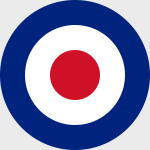Hobby Master HA8614 Hurricane Mk. Ia Fighter - F/Lt George Burges, No.69 Squadron, Malta, 1941 (1:48 Scale)
"Sergeant Lacey has shown consistent efficiency and great courage. He has led his section on many occasions and his splendid qualities as a fighter pilot have enabled him to destroy at least 19 enemy aircraft."
- Excerpted from a citation in the London Gazette, after racking up 23 claims (18 made during the Battle of Britain) and receiveing a Bar to his Distinguished Flying Medal for his continued outstanding courage and bravery during the Battle of Britain, November 26th, 1940
 The Hawker Hurricane was the first monoplane to join the Royal Air Force as a fighter aircraft, capable of reaching speeds in excess of 300-mph in level flight. Often compared with the sleek-looking Supermarine Spitfire, the Hurricane, in actuality, shouldered the brunt of the fighting during the "Battle of Britain", equipping more than three-fifths of the RAF's Fighter Command squadrons. When it lost its edge as a dogfighter in 1941, the Hurricane took on a number of other roles, including ground attack missions and maritime combat air patrols.
The Hawker Hurricane was the first monoplane to join the Royal Air Force as a fighter aircraft, capable of reaching speeds in excess of 300-mph in level flight. Often compared with the sleek-looking Supermarine Spitfire, the Hurricane, in actuality, shouldered the brunt of the fighting during the "Battle of Britain", equipping more than three-fifths of the RAF's Fighter Command squadrons. When it lost its edge as a dogfighter in 1941, the Hurricane took on a number of other roles, including ground attack missions and maritime combat air patrols.
The Hurricane Mk.I was the first production version, with fabric-covered wings, a wooden two-bladed, fixed-pitch propeller (first 435) or three blade two -pitch propeller, powered by the 1,030 hp (770 kW) Rolls-Royce Merlin Mk.II (first 364) or III engines and armed with eight .303 in (7.7 mm) Browning machine guns. Produced between 1937 and 1939.
Pictured here is a 1:48 scale replica of a RAF Hawker Hurricane Mk. Ia fighter that was piloted by F/Lt George Burges, who was attached to No.69 Squadron, then deployed to Malta during 1941.
Sold Out!
Dimensions:
Wingspan: 10-inches
Length: 8-inches
Release Date: March 2024
Historical Account: "Malta" - The designation No.69 Squadron has been used by the Royal Air Force for two quite different units.
No.3 Squadron, Australian Flying Corps was formed at Point Cook, Victoria, Australia in 1916. To avoid confusion with No.3 Squadron, RFC, it was known to the British military as "No. 69 Squadron RFC", although this terminology was never accepted by the squadron or the Australian Imperial Force.
The squadron was "re-formed" on January 10th, 1941, during World War II, when No.431 (General Reconnaissance) Flight RAF, briefly re-designated as No.1431 Flight RAF. on Malta became No.69 Squadron. It carried out strategic reconnaissance missions mainly using Martin Marylands until May 1942 when Spitfires began to carry out all reconnaissance missions. These were later supplemented by Martin Baltimores for shipping reconnaissance and anti-submarine patrols until April 1944 when the Squadron returned to the UK.


